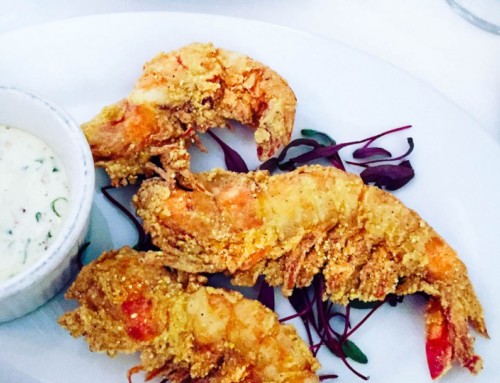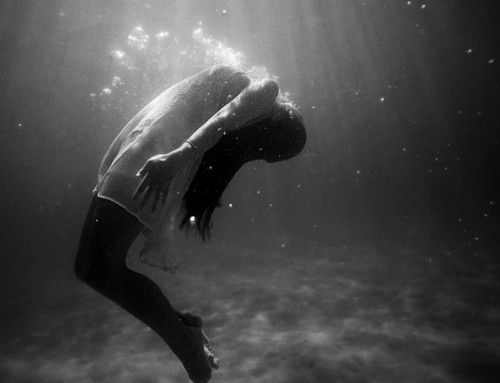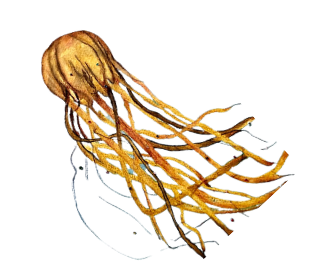“In the end, we will conserve only what we love; we will love only what we understand; and we will understand only what we are taught.” Senegalese conservationist Baba Dioum
Finally.
Seafood fraud is news-worthy.
Although that in itself is not something to be excited about, it is way overdue.
In the recent past, the seafood conversation has revolved around seafood sustainability, fisheries, catch shares, and ocean warming. While these topics will continue to be important, seafood fraud, also an important issue, has captured the attention of mainstream media.
But seafood fraud is not isolated to NY, Boston, Florida, or a single species, like cod.
Seafood fraud is a global issue, and has been around as long as fish has been caught and sold.
How can we continue to discuss sustainability, catch shares, and fisheries, when seafood fraud is rampant?
When asked, “What does sustainable seafood mean?” I’ve found the clearest, and possibly simplest answer comes to mind in one word.
Responsible.
- Responsible fishing methods.
- Responsible sourcing.
- Responsible tracking and labeling.
- Responsible on-going education.
Seems straightforward, doesn’t it?
Yet, it’s not.
So where does seafood fraud begin? And who is to blame? Why isn’t the seafood industry more responsible?
These are tough questions with no easy answers.
Let’s tackle the supply chain, where the possibilities for fraud are far-reaching due to its structure and size.
Simply put, fresh fish is caught, and then needs to be sold.
But the supply chain is complicated and diverse.
For instance, fish is caught in Miami, then sold to buyers in New York, who sell it to distributors in Florida, who in turn, sell the same fish to customers in Miami.
How do I know?
Several years ago I’d worked for a wholesale seafood distributor in Florida, where I’d sold and bought fresh fish to the food industry for a few years.
Indulge me, for a few minutes, while I take you through a typical “day in the life of” a fresh fish buyer.
The wholesale seafood buyer begins her morning looking at fresh fish price sheets from dozens of seafood suppliers that would like to sell fresh fish.
Fast, furious, Wall Street-like calls begin to ports around the US: Boston, Hawaii, Maine, Miami, and Seattle, to name a few.
The wholesale seafood buyer needs to buy thousands of pounds of fish, several days of the week.
Seafood species of particular interest are, cod, halibut, snapper of various sizes, tilapia, salmon, grouper, mahi-mahi, swordfish, and tuna. Also included in this buying frenzy are crabs, clams, lobsters, mussels, oysters, and scallops. In addition, specialty items for chefs who have a discerning clientele, or are having a special function.
Some seafood species are sold as whole fish, but most is sold without the head. It’s pure economics. Fish is sold by weight. Fresh fish can also be processed and sold in fillet form, or portion, either on the boat, at a processing facility at the docks, or at the distributor.
In the food service industry, there are several species of fish that sell in the market. Take a look at any restaurant menu in the US. The top seafood species typically bought and sold are cod, grouper, mahi-mahi, salmon, snapper, tilapia, and tuna. This needs to change, too, but that a story for another post.
Depending on how much fish the wholesale distributor’s needs for its customer-base, what is available in the market, and the price of the fish, the wholesale seafood buyer works to buy as much fresh fish, as fast, and as cheap, as she can from the most reputable buyers.
She has a trusting relationship with her suppliers (usually), and relies on the suppliers to send the correct fish.
Then the fish is shipped to the wholesale distributor via truck, air, or ship. This could be next day service, two days, or more, depending on how far the seafood has to travel from the ports to the distributor.
The fish are unseen by the wholesale seafood buyer at the time of the call, and sometimes unseen by the seller on the other end of the phone. Sometimes, a boat sells its fish before it gets to the dock.
The receiving people at the seafood wholesale distributor are responsible for checking in the seafood order.
Things the receiving people check for are, fish weights of each box, species identification inside the box against the purchase order, temperature of the fish, and freshness of the product in the box, again all against the purchase order from the seafood buyer. There are times when the buyer is present during receiving, but not always.
Once the fresh fish is received into the wholesale distributor warehouse, the fish is sorted, iced, and then held in a cold storage area ready to be sold to the restaurants, retail stores and other distributors.
Here are a few things that can, and do, go wrong:
- The wrong fish is packed in the box at the supplier and the receiving personnel at the distributor doesn’t catch the error. It could be bad judgment, lack of knowledge, short on time, etc.
- The fresh fish box is mislabeled. For instance, there are several species of red snapper that look very similar in size, shape, and color, but vary in quality and price.
- The fish processors cut the wrong species for the customer. Would you know the difference between a square-cut, four-ounce portion of snapper against tilapia of the same cut?
- Product is mislabeled during production. When hundreds of boxes of fish are packed and labeled by a production crew of twenty in a small amount of time, mistakes happen.
- Sometimes chefs don’t inspect their shipments. Sometimes the dishwasher at the restaurant receives the fish shipment.
These are honest mistakes.
Or are they fraud?
So we’re back to the question, who’s to blame for seafood fraud?
Is it the boats? The suppliers? The distributors? The chefs?
IMHO, it’s easy to see the challenges of the supply chain and where things can go wrong. I can see where the suppliers need to move product, and where chefs are busy and stressed.
Let’s go back to the simplest part of the supply chain equation. Once fish is caught, it needs to be sold.
It is pure economics.
Instead of blaming a specific part of the equation, we need to discuss the solutions.
Why would I go through the trouble to explain all of this?
Because I care.
Because I want to show it is not the exclusive responsibility of the boat captains, the suppliers, the buyers, the distributors, the chefs, or the dishwashers.
It is everybody’s responsibility.
Yes, there are issues with the supply chain. But if we sit quietly and don’t address these issues, we’ll continue to have seafood fraud.
Until we demand accountability and responsibility at all levels of the seafood industry, we can expect to have seafood fraud in the fish industry.
We need to insist, and demand to know where our fish is caught, and how our fish is caught.
We need fish police to check the supply chain at the docks, the distributors, the restaurants, and the retail markets.
Do you want traceability, transparency, and more responsibility in the fish industry?
Yes, I thought so.
Here are a few things you can do:
- Whether you buy fish for a company, or fish for your family, ask questions. Take the time to know which seafood species are in season. Ask where the fish comes from, and if the seafood is responsibly fished.
- If you are a seafood buyer, get to know your fishermen, by name.
- There are several organizations working towards the effort through education, like Oceana, Chefs Collaborative, and Monterey Bay Aquarium’s Seafood Watch program. Become familiar with the policies and practices of these responsible organizations.
- At the legislative level, Rep. Edward “ED” Markey [DMA7], has sponsored a bill to protect American consumers and fishermen. Consider supporting this bill.
- Support seafood suppliers, like sea to table and i love blue sea, who connect fishermen with chefs and consumers.
- Before you eat seafood in a restaurant, go to Fish2Fork, an international organization that connects you to restaurants that only serve responsibly caught seafood.
People like you, and me, who care about the future of the fish industry, are the ones who can make a difference.
Until the seafood industry becomes more transparent and authentic, we will continue to have seafood fraud.
Take action.
Please.
For the future of our fish and oceans.
For our children, so they have fresh, sustainable fish to eat.
Let’s keep fresh, sustainable seafood in the news.
Not seafood fraud.








